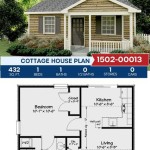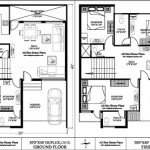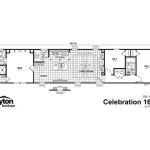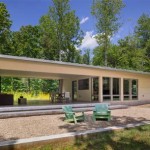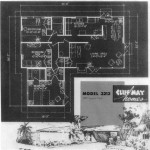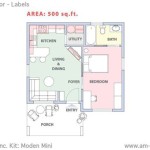Planning Permission To Build A House In Your Garden
Building a new house, often referred to as a "garden house," within the curtilage of an existing property is an increasingly popular development strategy. This is particularly relevant in areas with high property values and a shortage of available building land. However, constructing a separate dwelling within one's garden invariably requires planning permission. Understanding the complexities of the planning system, local planning policies, and potential obstacles is crucial for a successful application.
The foundational principle of planning law in many jurisdictions, including the UK, is that development requires planning permission unless it is specifically exempted by legislation. "Development" is broadly defined to include any building operation or material change of use of land. Constructing a new house clearly falls under this definition, necessitating a formal application to the local planning authority.
Understanding Permitted Development Rights
While most new house construction requires planning permission, it is important to understand the concept of Permitted Development (PD) rights. PD rights allow homeowners to carry out certain types of building work without the need for planning permission. However, these rights are strictly limited and rarely apply to the construction of a new, independent dwelling. Typically, PD rights focus on extensions, loft conversions, or outbuildings ancillary to the main house. The creation of a separate residential unit will almost invariably exceed the scope of PD rights.
Several factors can further restrict or remove PD rights. These can include: *
Article 4 Directions:
Local authorities can issue Article 4 directions which remove PD rights in specific areas, often to protect the character or appearance of the locality. *Conservation Areas:
PD rights are often more restricted in Conservation Areas, where the emphasis is on preserving the architectural and historic character of the area. *Listed Buildings:
Buildings that are formally listed for their architectural or historical significance have very limited PD rights. Any works affecting a listed building, including those within its curtilage, are subject to strict controls. *Covenants and Restrictions:
Private covenants or restrictions attached to the property deeds may also prevent or limit development, regardless of PD rights.Preparing a Planning Application
Given that building a garden house almost always requires planning permission, the preparation of a comprehensive and well-presented planning application is essential. The application must provide sufficient information to enable the local planning authority to assess the impact of the proposed development on the surrounding area and to determine whether it complies with relevant planning policies.
A typical planning application will include the following:
Application Forms:
Standard forms provided by the local planning authority.Location Plan:
A map showing the application site in relation to its surroundings.Site Plan:
A detailed plan of the site showing the existing buildings, proposed building, boundaries, access points, and any other relevant features.Elevations:
Drawings showing the external appearance of the proposed building from all sides.Floor Plans:
Drawings showing the internal layout of the proposed building.Section Drawings:
Drawings showing a vertical section through the building to illustrate its construction and relationship to the ground.Design and Access Statement:
A written statement explaining the design concept, how the building will be accessed, and how it addresses any potential impacts on the surroundings.Other Supporting Documents:
Depending on the specifics of the proposal and the requirements of the local planning authority, other supporting documents may be required, such as a tree survey, ecological assessment, flood risk assessment, or drainage strategy.
The level of detail required in the supporting documents will vary depending on the scale and complexity of the proposal. It is advisable to consult with a planning professional to determine the specific requirements for each individual application.
The Design and Access Statement is a particularly important document. It provides an opportunity to justify the design of the proposed building, explain how it relates to its surroundings, and address any concerns raised by the local planning authority or local residents. A well-written Design and Access Statement can significantly increase the chances of a successful application.
Key Planning Considerations
Local planning authorities assess planning applications against a range of criteria, including national planning policies, local planning policies, and any other material considerations. Several key planning considerations are particularly relevant to applications for garden houses:
Impact on Residential Amenity
The impact of the proposed development on the amenity of neighboring properties is a primary concern. Amenity encompasses a range of factors, including privacy, light, noise, and outlook. The local planning authority will assess whether the proposed building would result in unacceptable levels of overlooking, overshadowing, or noise disturbance for neighboring residents. Considerations such as the height, scale, and orientation of the building, as well as the proximity to neighboring properties, will be taken into account. Mitigation measures, such as screening or landscaping, may be required to address any potential impacts on residential amenity.
Character and Appearance of the Area
Planning policies generally seek to protect and enhance the character and appearance of the area. The local planning authority will assess whether the proposed building is visually compatible with its surroundings, taking into account factors such as the architectural style, materials, and landscaping. The authority may be concerned if the proposed building is considered to be out of character with the existing street scene or if it detracts from the visual amenity of the area. Careful consideration should be given to the design of the building to ensure that it is sympathetic to its surroundings.
Access and Parking
The local planning authority will assess whether the proposed development provides adequate access and parking arrangements. This includes consideration of the suitability of the access route, the availability of on-street parking in the area, and the potential for the development to generate additional traffic. The local planning authority may require the provision of off-street parking spaces to mitigate any potential impact on parking availability. Furthermore, accessibility for people with disabilities should be considered in the design of the building and its access arrangements.
Garden Grabbing and Backland Development
Local planning policies often seek to resist "garden grabbing" or "backland development," which refers to the subdivision of existing residential plots to create new dwellings. While not necessarily prohibited, such developments are typically scrutinized closely to ensure that they do not result in an overdevelopment of the site or have a detrimental impact on the character of the area. The size of the remaining garden area, the spacing between buildings, and the overall density of development will be important considerations. The local planning authority may be more likely to support a proposal if it can be demonstrated that it represents a sustainable and well-integrated development that does not compromise the amenity of the existing property or its neighbors.
Sustainability and Environmental Considerations
Increasingly, planning policies emphasize sustainability and environmental considerations. The local planning authority may require evidence that the proposed building has been designed to be energy efficient and to minimize its environmental impact. This could include measures such as the use of renewable energy sources, rainwater harvesting, and sustainable drainage systems. In addition, the impact of the development on biodiversity and the natural environment will be taken into account. A tree survey may be required to assess the impact on existing trees, and ecological surveys may be necessary to identify any protected species or habitats that could be affected by the development.
Furthermore, considerations regarding drainage and waste management will be relevant. Ensuring adequate drainage infrastructure to prevent flooding both on and off-site is crucial. A plan detailing waste collection and storage arrangements should also be included in the application.
Successfully navigating the planning process for a garden house requires a thorough understanding of planning policies, attention to detail in the preparation of the application, and a willingness to address any concerns raised by the local planning authority or local residents. Seeking professional advice from a planning consultant or architect can significantly increase the chances of a successful outcome.

Backland Development Planning Permission For Building In Your Garden Urbanist Architecture Small Company London

A Guide To Planning Permission For Garden Rooms Everything You Need Know Nordic Buildings

Do You Need To Apply For Planning Permission Garden Office Guide

Outbuildings Outside Space Do I Need Planning Permission

Backland Development Planning Permission For Building In Your Garden Urbanist Architecture Small Company London

Planning Permission South West Log Cabins

Backland Development Planning Permission For Building In Your Garden Urbanist Architecture Small Company London

Planning Permission For Garden Rooms In Gardenrooms Ie

Do You Need Planning Permission For A Garden Room

Do I Need Planning Permission For Outbuildings Drawing And Consultants Architects In London

